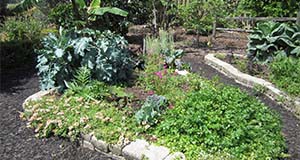While the desire to implement urban agriculture projects is growing in popularity, there is little information available to help Extension agents and interested citizens fully understand how to implement urban agriculture in their community. This new 11-page document provides an overview of key information required to establish an urban agriculture ordinance. Case studies from urban agriculture initiatives in Florida provide real-world examples of the required activities, potential challenges, and beneficial partners for implementing these initiatives. Resources related to the case studies and additional urban agriculture resources can be found at the end of the document, so that readers can find further information specific to their interests and needs. Written by Candace A. Spencer, Catherine G. Campbell, Anna Prizzia, and Liz Felter, and published by the UF/IFAS Horticultural Sciences Department.
http://edis.ifas.ufl.edu/hs1327
Category: Sustainable Community Development
Stakeholder-Identified Community Garden Program Outcomes
Extension clientele often contact agents for expertise on starting or maintaining a community garden; however, agents’ ability to collect meaningful data from these activities can be a challenge. This 3-page publication discusses a statewide study that was conducted by the author to identify community garden outcomes. Written by Susan Webb and John Diaz and published by the UF/IFAS Department of Agricultural Education and Communication, January 2018.
http://edis.ifas.ufl.edu/wc295
Conservation Subdivision: Post-construction Phase: Policy Directions and the Importance of Assessing Stakeholder Opinions
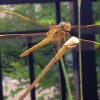 Simply designating open space in a development is not enough to provide long-term protection for a variety of wildlife. New policies need to be developed that encourage developers of conservation developments to adopt long-term management practices that support biodiversity conservation. This 5-page fact sheet discusses policy options that could be used to support conservation management practices and reports on a survey of Colorado landowners who have created conservation developments and their opinions about a policy option to support the implementation of management practices. Written by Daniel Feinberg and Mark Hostetler, and published by the UF Department of Wildlife Ecology and Conservation, December 2014. (Photo credit: Daniel Feinberg)
Simply designating open space in a development is not enough to provide long-term protection for a variety of wildlife. New policies need to be developed that encourage developers of conservation developments to adopt long-term management practices that support biodiversity conservation. This 5-page fact sheet discusses policy options that could be used to support conservation management practices and reports on a survey of Colorado landowners who have created conservation developments and their opinions about a policy option to support the implementation of management practices. Written by Daniel Feinberg and Mark Hostetler, and published by the UF Department of Wildlife Ecology and Conservation, December 2014. (Photo credit: Daniel Feinberg)
http://edis.ifas.ufl.edu/uw401
Economic Value of the Services Provided by Florida Springs and Other Water Bodies: A Summary of Existing Studies
 Florida residents and visitors place a high value on aquatic natural resources. This 8-page fact sheet reviews nine studies that demonstrate that Florida’s springs have a very large economic value, both for recreation and resource conservation. In these studies, economists measure the value of ecosystem services in dollar terms to assist management decisions concerning natural resources. Willingness to pay studies show that people who benefit from Florida springs place a high value on them. Economic contribution studies show that Florida springs play a significant role in local and state economic health and job creation. Written by Sara Wynn, Tatiana Borisova, and Alan Hodges, and published by the UF Department of Food and Resource Economics, November 2014. (UF/IFAS Photo by Tyler Jones.)
Florida residents and visitors place a high value on aquatic natural resources. This 8-page fact sheet reviews nine studies that demonstrate that Florida’s springs have a very large economic value, both for recreation and resource conservation. In these studies, economists measure the value of ecosystem services in dollar terms to assist management decisions concerning natural resources. Willingness to pay studies show that people who benefit from Florida springs place a high value on them. Economic contribution studies show that Florida springs play a significant role in local and state economic health and job creation. Written by Sara Wynn, Tatiana Borisova, and Alan Hodges, and published by the UF Department of Food and Resource Economics, November 2014. (UF/IFAS Photo by Tyler Jones.)
http://edis.ifas.ufl.edu/fe959
Conservation Subdivision: Post-construction Phase–Engaging Residents (WEC334/UW379)
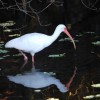 As urban communities grow, design and management strategies for new developments become critical factors that determine impacts on natural resources. How can we accommodate growth yet conserve natural resources, such as biodiversity, water, and energy? In this document, we focus on conserving biodiversity when land is subdivided, constructed, and occupied. This 6-page fact sheet was written by Daniel Feinberg and Mark Hostetler, and published by the UF Department of Wildlife Ecology and Conservation, June 2013.
As urban communities grow, design and management strategies for new developments become critical factors that determine impacts on natural resources. How can we accommodate growth yet conserve natural resources, such as biodiversity, water, and energy? In this document, we focus on conserving biodiversity when land is subdivided, constructed, and occupied. This 6-page fact sheet was written by Daniel Feinberg and Mark Hostetler, and published by the UF Department of Wildlife Ecology and Conservation, June 2013.
http://edis.ifas.ufl.edu/uw379
Developing Urban Community Garden Projects (WC139)
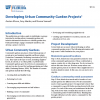 Community gardens are pieces of land where groups of people grow and maintain vegetable and flower plants. They exist in all types of areas, including neighborhoods, at schools, or on other public or private lands. Community gardens grow food for local consumption or sale and can also be used for teaching gardening and other skills This 7-page fact sheet provides a guide to individuals or groups interested in starting urban community gardens and includes information about how to identify garden sites, build partnerships, engage community members, and develop a project overview. Written by Austen Moore, Amy Harder, and Norma Samuel, and published by the UF Department of Agricultural Education and Communication, March 2013.
Community gardens are pieces of land where groups of people grow and maintain vegetable and flower plants. They exist in all types of areas, including neighborhoods, at schools, or on other public or private lands. Community gardens grow food for local consumption or sale and can also be used for teaching gardening and other skills This 7-page fact sheet provides a guide to individuals or groups interested in starting urban community gardens and includes information about how to identify garden sites, build partnerships, engage community members, and develop a project overview. Written by Austen Moore, Amy Harder, and Norma Samuel, and published by the UF Department of Agricultural Education and Communication, March 2013.
http://edis.ifas.ufl.edu/wc139
Developing Land in Florida with Fire in Mind: Recommendations for Designers, Developers, and Decision Makers (FOR63/FR059)
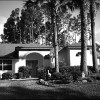 In 1998, fire destroyed or damaged 330 homes and businesses in Florida. Losses totaled more than $800 million. In some places, homes were saved by fire-fighting crews, or where the right decisions were made by builders or designers. With advance planning, architects and developers can do a great deal to reduce wildfire risk for those living and working in Florida. This 5-page fact sheet was written by Martha C. Monroe and Susan Marynowski, and published by the UF Department of School of Forest Resources and Conservation, September 2012.
In 1998, fire destroyed or damaged 330 homes and businesses in Florida. Losses totaled more than $800 million. In some places, homes were saved by fire-fighting crews, or where the right decisions were made by builders or designers. With advance planning, architects and developers can do a great deal to reduce wildfire risk for those living and working in Florida. This 5-page fact sheet was written by Martha C. Monroe and Susan Marynowski, and published by the UF Department of School of Forest Resources and Conservation, September 2012.
http://edis.ifas.ufl.edu/fr059
Conservation Subdivision: Post-construction Phase – Urban Trees Can Reduce Household Carbon Footprint (WEC321/UW366)
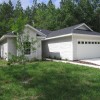 During the post-construction phase, the conservation and planting of native trees in individual yards and open spaces can reduce household and neighborhood carbon footprints. This 5-page fact sheet discusses the importance of urban trees and their role in mitigating for climate change by avoiding carbon emissions and removing carbon dioxide from the atmosphere. Written by Richard Vaughn, Mark Hostetler, and Francisco Escobedo, and published by the UF Department of Wildlife Ecology and Conservation, June 2012.
During the post-construction phase, the conservation and planting of native trees in individual yards and open spaces can reduce household and neighborhood carbon footprints. This 5-page fact sheet discusses the importance of urban trees and their role in mitigating for climate change by avoiding carbon emissions and removing carbon dioxide from the atmosphere. Written by Richard Vaughn, Mark Hostetler, and Francisco Escobedo, and published by the UF Department of Wildlife Ecology and Conservation, June 2012.
http://edis.ifas.ufl.edu/uw366
WEC283/UW328 Conservation Subdivision: Construction Phase – Dark-sky Lighting
WEC283, a 4-page illustrated fact sheet by Mark Hostetler, discusses how to manage lighting during the construction phase and explains the importance of good lighting to biodiversity in a conservation subdivision. Includes references. Published by the UF Department of Wildlife Ecology and Conservation, April 2010.
http://edis.ifas.ufl.edu/uw328
WEC284/UW329 Conservation Subdivision: Construction Phase – Native Landscaping Palette
WEC284, a 9-page illustrated fact sheet by Mark Hostetler and Martin B. Main, discusses the importance of emphasizing native plants when selecting a landscape palette. Includes references. Published by the UF Department of Wildlife Ecology and Conservation, May 2010.
http://edis.ifas.ufl.edu/uw284
WEC278/UW323 Conservation Subdivision: Construction Phase – Protecting Trees and Conserved Natural Areas
WEC278, a 6-page illustrated fact sheet by Mark Hostetler and Glenn Acomb, discusses techniques and strategies that minimize impacts of the construction process on conserved trees and natural areas. Includes references. Published by the UF Department of Wildlife Conservation and Ecology, March 2010.
http://edis.ifas.ufl.edu/uw323
WEC281/UW326 Conservation Subdivision: Design Phase: Wetland Considerations
WEC281, a 4-page illustrated fact sheet by Mark Hostetler, discusses issues surrounding on-site protection of wetlands and strategies to create wetlands that conserve biodiversity when land is subdivided. Includes references. Published by the UF Department of Wildlife Ecology and Conservation, March 2010.
http://edis.ifas.ufl.edu/uw326
FCS7243/FY1151 Understanding Sustainability: Soliciting Public Input in the Comprehensive Planning Process
FCS7243, a 3-page fact sheet by Jeffrey P. Gellermann, Mickie E. Swisher, and Karla A. Lenfesty, is part of the Understanding Sustainability series. It discusses the importance of the comp plan information gathering process for the development of sustainable communities. Published by the UF Department of Family Youth and Community Sciences, March 2010.
http://edis.ifas.ufl.edu/fy1151
WEC279/UW324 What Types of Urban Greenspace are Better for Carbon Dioxide Sequestration?
WEC279, a 4-page illustrated fact sheet by Mark Hostetler and Francisco Escobedo, presents the results of models of carbon sequestration for representative plots of trees and lawns. Includes references. Published by the UF Department of Wildlife Ecology and Conservation, March 2010.
http://edis.ifas.ufl.edu/uw324
FOR230/FR292 Comparison of Community Leader Perceptions on Urban Forests in South Florida
FOR230, a 4-page illustrated fact sheet by Francisco Escobedo, Robert Northrop, Michael Orfanedes, and Anna Iaconna, compares the results from a survey conducted in Broward and Hillsborough Counties in Florida. Includes references. Published by the UF School of Forest Resources and Conservation,
http://edis.ifas.ufl.edu/fr292
FOR231/FR293 Southern Escambia County, Florida’s Urban Forests
FOR231, a 12-page illustrated fact sheet by Francisco Escobedo, Sebastian Varela, Christine Staudhammer, and Benjamin Thompson, reports on analysis of tree data using USDA Forest Service's Urban Forest Effects (UFORE) model, to help urban foresters, residents and planners assess severa laspects of their urban forests and compare southern Escambia County’s urban forest with forests in other cities in the state of Florida. Includes references.
Published by the UF School of Forest Resources and Conservation, December 2009.
http://edis.ifas.ufl.edu/fr293
WEC276/UW321 Conservation Subdivision: Design Phase – Location of Conserved Open Spaces
WEC276, a 5-page illustrated fact sheet by Mark Hostetler, focuses on decisions made in the design phase — what percentage of the site will be conserved as open space and where to locate it so as to maximize biodiversity values. Includes references. Published by the UF Department of Wildlife Ecology and Conservation, December 2009.
http://edis.ifas.ufl.edu/uw321
FCS7242/FY1134 Understanding Sustainability: The Importance of Sustainable Development and Comprehensive Plans: Goals, Objectives, Policies
FCS7242, a 4-page fact sheet by Jeffrey P. Gellerman, Mickie E. Swisher, and Karla A. Lenfesty, discusses the comprehensive plan, its components, and its role in sustainable community development. Published by the UF Department of Family Youth and Community Sciences, February 2010.
http://edis.ifas.ufl.edu/fy1134

